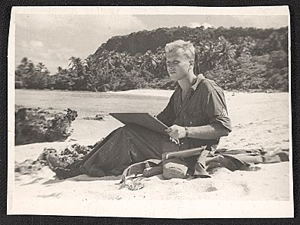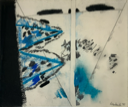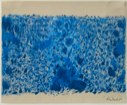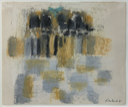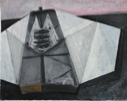American, (1914–1980)
A magna cum laude graduate of Princeton, Kienbusch studied at the Art Students League, the Colorado Springs Fine Arts Center, the Academy Colarossi, and with Abraham Rattner in Paris. Despite additional work with Anton Refregier and Stuart Davis, Kienbusch did not find his true identity as an artist until he spent the summers of 1940 and 1941 in Stonington, Maine. There he discovered the powerful Maine landscape that had attracted Winslow Homer, John Marin, and Marsden Hartley. Hartley’s work, especially, provided a stylistic model, and his desire to express the “inner reality of the world of nature” coincided with Kienbusch’s own feelings. Best known for semi-abstract landscapes, Kienbusch spent summers photographing and sketching the pine trees, buoys, and shacks of the Maine coast, and during the winter months, while teaching at the Brooklyn Museum School, translated his summer’s work into geometrically formulated landscapes. During the 1960s Kienbusch adopted a looser technique to capture better the dynamic rhythms of natural forces.
Source: Smithsonian American Art Museum: Virginia M. Mecklenburg Modern American Realism: The Sara Roby Foundation Collection (Washington, D.C.: Smithsonian Institution Press for the National Museum of American Art, 1987)
Butterflies Over Meadow 1987.031
From the Porch, #3 1993.053
Gulls in Wake of Boat 1992.018
Land, Sky Structure 1950 1993.074
Sea Roses 1984.026
Seagrass into Blue Ocean 1981.094
The Palace Terrace, Knossos 1981.095
Untitled (Aerial Object) 1987.016
